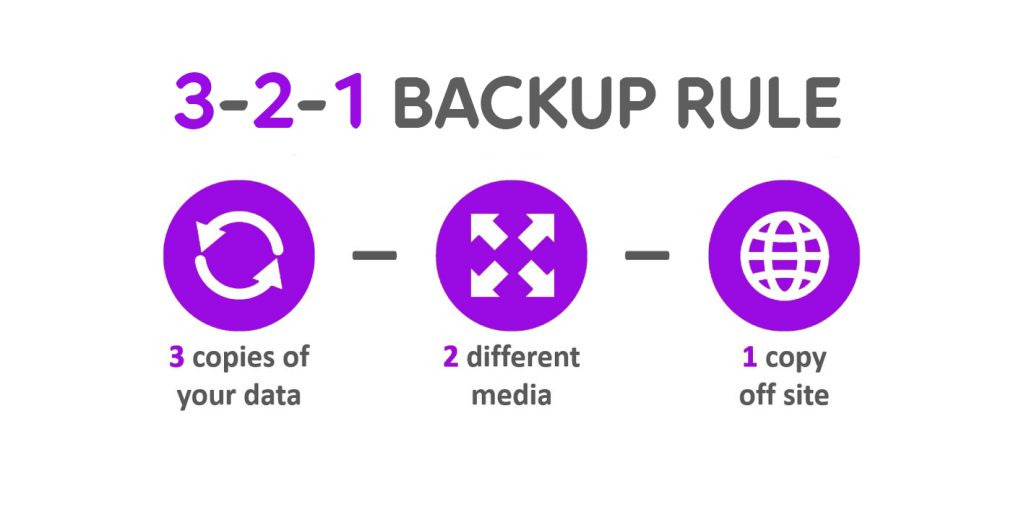Having backups is important to protect any important data – and videos are no exception to that. If you have any that are important to you, it is always best to back them up just in case the data is lost.
It helps to have a strategy that you use to ensure your files are safe – which is where the 3-2-1 rule can be helpful.

“What is the 3-2-1 Backup Rule?”
Essentially the 3-2-1 backup rule is an acronym of sorts to help remember a simple yet effective strategy to backup files. That strategy is to have:
- 3 total copies of the data.
- 2 copies that are stored on different media.
- 1 copy that is stored offsite.
The reasoning behind these rules is simple:
- More copies of the data provide additional protection in case one is compromised or lost.
- Storing the copies on different media ensures a single issue such as a hard drive failure doesn’t wipe them out.
- Storing one copy offsite protects against localized issues such as natural disasters.
As you can see this reasoning is why the 3-2-1 backup rule is useful. It will protect data and provide a guarantee that you can restore it if necessary.

How to Use the 3-2-1 Rule
In order to use the 3-2-1 rule to effectively backup videos, there are several steps that you should take:
- Identify the videos that need to be backed up
In many cases you may not need to back up all your videos, and if so you should identify which ones you do want to back up. That is especially the case if you have different versions of them, in which case you may only want to back up the original – i.e. the highest quality version.
From that original you can use Movavi Video Converter for Mac (www.movavi.com/videoconvertermac/) to convert the format into the versions you require later. It can even edit and prepare them in other ways, and do the same for audio or image files too.
Be sure to keep tabs on the total file size during this stage. If you aren’t careful it could become very large and take up a lot of storage space – which may be an issue.
- Decide on the media or backup storage that will be used
When choosing the type of storage that you’re going to use, you should consider the total size of the files. Using USB drives and DVD or Blu-ray discs may seem convenient, but you could end up requiring lots of them if you go down that route.
In most cases the safe option would be a high capacity external hard drive.
Another option to consider is cloud storage – which could act as an offsite copy. However it can be costly, especially if you need a considerable amount of storage space.

- Come up with a schedule
Once you have decided which options you’re going to use – come up with a schedule. The regularity that you need to back up your videos should be based on how frequently you alter the files or record new footage.
For example if you frequently record new footage on a daily basis, you may want to back them up weekly. On the other hand if you only add a few each week you could back them up monthly instead.

All in all if you follow those steps it should be easy enough to implement the 3-2-1 backup rule for your videos. The only major issue you may face is the amount of storage space that is required – but that is not insurmountable if you consider your options carefully.









